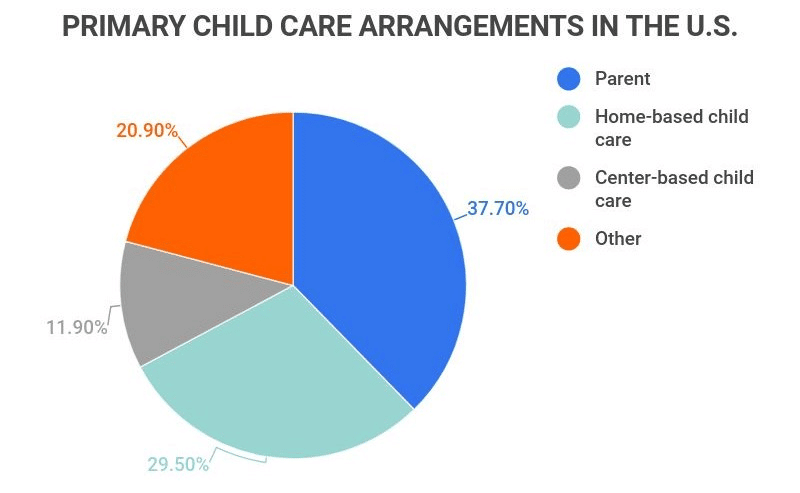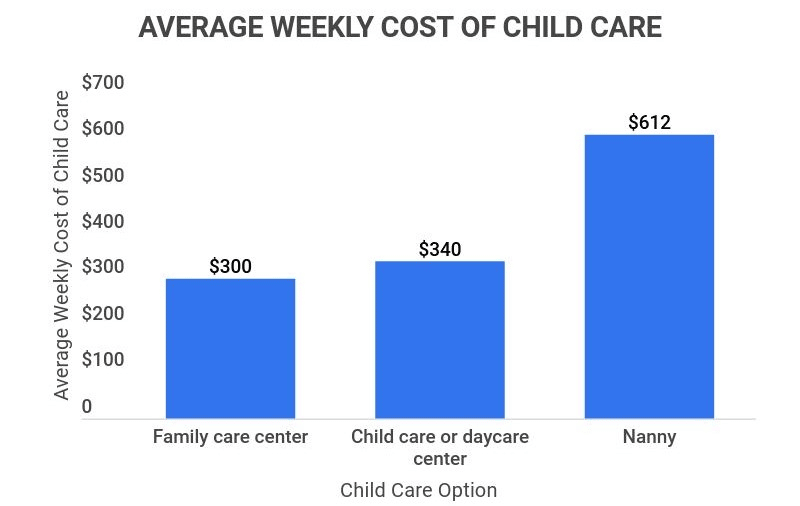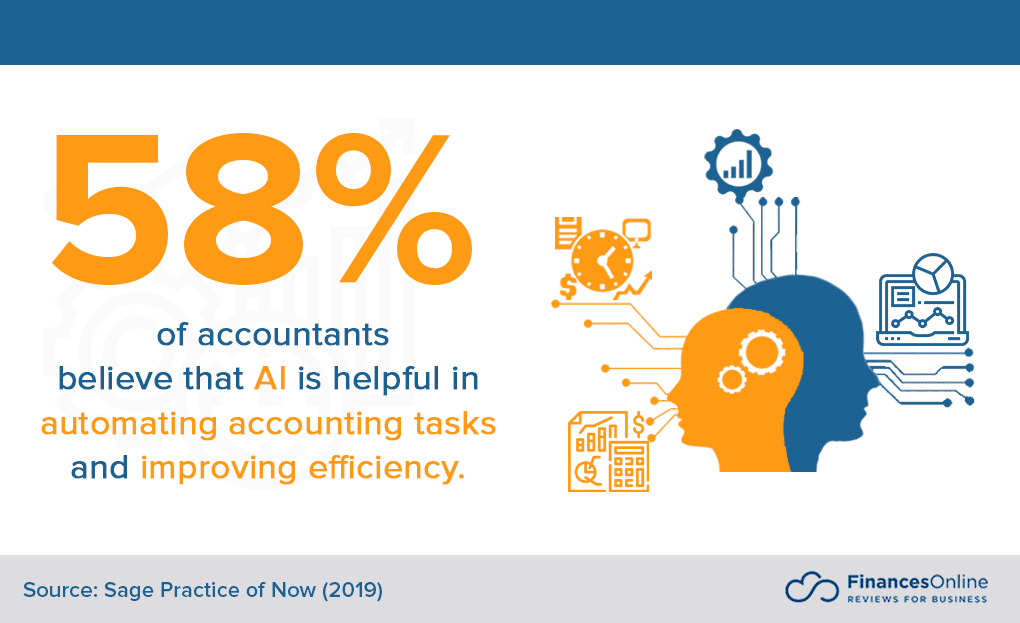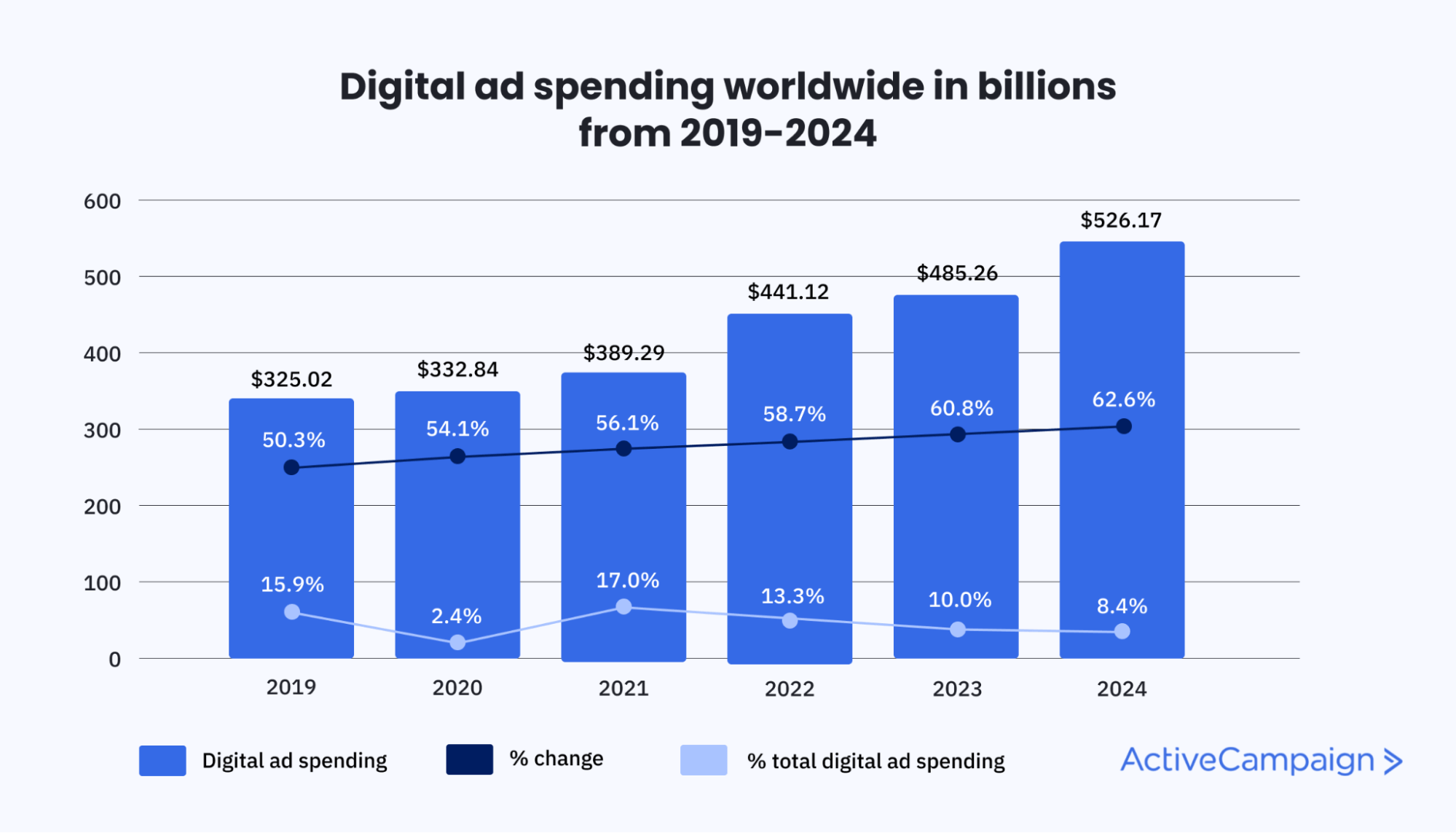Despite the declining fertility rate in the U.S., the childcare market is booming. One thing every city will always need is babysitters. In fact, according to the United States Census, over 27% of children come from single-parent families, pointing to a need for additional childcare.

Depending on your state, the age at which a child can be left alone fluctuates. For example, in Illinois, a child must be at least 14, while in Maryland, 8 is considered old enough to be home alone. Over the past few years, more childcare companies have been popping up.
As of last year, the global childcare market earned $22.4 billion. It’s predicted to reach a whopping $45.8 billion at a CAGR of 6.7% by 2032. According to Statistica, there is roughly 49.43 million children under the age of 18 in the U.S. All in all, not a bad time to be a babysitter.
This guide is designed to offer step-by-step instructions on how to start a babysitting business. If you’re looking for a way to get ahead in the childcare industry, this is a great place to start. Learn about marketing, registering your company, planning for business success, and even engaging with prospective clients. Here’s what you should know.
1. Conduct Babysitting Business Market Research
Before you start your own babysitting business, consider your market research strategy. Market research tells you what you need to know about potential clients, location, competitors, and industry. Some of the information to research as you begin market research includes:
- Number of families with children in your area
- Competitor babysitting services in town
- The current rate for babysitters
- Additional services offered by babysitting companies
- Childcare arrangement statistics in your state and city

There are two types of market research, these are primary and secondary research.
Primary research includes first-person data compiled by you. It includes things like calls made to government agencies, visiting competitor babysitting companies in person, and polling local families about childcare preferences.
Secondary research is pre-recorded data you obtain through a third party. This includes online reviews of rival companies, government census statistics on families in your area, and published reports by childcare experts.
Choosing the Right Services for Your Babysitting Business
Childcare sounds like an all-encompassing service, but there are many facets of the babysitting industry to explore. Some of the common services associated with childcare businesses include:
- Overnight child care
- Basic child care
- Before and after-school care
- Hourly babysitting
- Meal prep
- House cleaning/maid services
- Dog walking/pet sitting
- Senior care
The babysitting service types you offer impact your company’s prices. Add-on services like cooking, cleaning, and dog walking increase profit, and provide avenues of expansion for families without children.

You may also want to include products in your babysitting service plan. For families looking for ways to keep kids entertained, you can add packages such as:
- Coloring books and crayons
- Modeling clay and dough
- Science experiment materials
- Board games
You may also include trips and special events, such as indoor play places, science center, or museum trips.
2. Analyze the Competition
A major part of starting any business is analyzing competition. Knowing what other babysitting businesses in your area offer helps you improve your own business plan. Some of the things to investigate during your analysis include:
- Prices
- Services
- Current number of clients
- Special offers
- Online engagement efforts
- Base location
Learn more about local childcare competition by chatting with locals, calling other companies to ask about services and prices, and visiting competitor websites and social media accounts.
As a small childcare business, your competition is primarily local. Some of the major U.S. childcare companies include:
Nanny Poppins
Nanny Poppins serves customers across the country. They offer services such as newborn care, babysitting, private chef, personal assistant, butler, special needs caregiver, and housekeeper. They also offer the options of live-in or live-out care on a full-time or part-time basis.
Urban Sitter
Urban Sitter partners with childcare professionals throughout the U.S. Employees apply to the chain and must pass background checks and obtain a COVID vaccine badge to work with families. Urban Sitter offers childcare, tutoring, pet sitting, and elderly care.
3. Understand the Costs of Starting a Babysitting Business
Beginning a company takes start-up capital, and the investment of ongoing costs. Before you commit to a babysitting job, develop a budget and financial strategy. Understanding the costs associated with a new business ensures there are no nasty surprises later.
Here, we’ll touch on the different costs associated with beginning a babysitting business.
What Does It Cost to Start a Babysitting Business?
Babysitting businesses are extremely customizable. You can start one for as little as $5,000 or as much as $50,000. The low range involves startups working with a home office and no external facility. The high startup costs include commercial property leases, and commercial vehicle purchases.
Here are some of the most common costs you’ll encounter as you start a babysitting brand:
- Training
- Employee wages
- Insurance
- Commercial property lease
- Commercial vehicle
- Materials/activities/toys/games
- First aid training
- First aid kit
- Business license and permits
- Marketing
You’ll also invest in costs such as a POS system, banking fees, legal fees, accounting costs, and administrative supplies.
Business Equipment/Materials
Opening a successful babysitting business doesn’t require a lot of equipment. In fact, many childcare brands open with no equipment apart from home office materials.
Some of the materials you might like to have on hand include:
- First aid kit – $20 to $200 depending on supplies
- Art supplies – $30 to $60
- Board games – $20 to $40 per game
- Car seat – $120 to $250 depending on brand and age range
- Cleaning supplies – Prices range based on product. Expect to pay $4 to $6 per bottle of cleaner, and around $10 to $20 per mop, broom, or duster.
You can get these materials from local department and grocery stores. You can also order online through Amazon, Walmart, and other suppliers.
Cost of Renting or Leasing a Location
Commercial properties aren’t essential for small local babysitting businesses. Unlike a daycare business, the children don’t come to you. However, if you want to setup an office to appear more official for clients, you can lease one by the square foot.
Most commercial property ads list buildings by the square foot. For example, you might see an office listed fro $25 per square foot. If the unit is 500 square feet, this comes out to $12,500 per year.
Business Formation
Starting a company in the U.S. requires a legal business formation. You can register your name and apply for permits through the Small Business Administration. The process is straight forward and all forms are online. Expect to spend between $300 to $800 for registration and permits.
Business Insurance
Working in any industry requires business insurance. Working with children, only makes it more important to protect yourself and your company against liability. For childcare providers, both general liability and professional liability insurance are key.
Utilities
Utilities amount to roughly 4% of the costs of a business. The main utilities you’ll pay for an office include:
- Internet
- Phone
- Electricity
- Power
- Heat
If you keep a home office, and nanny or babysit in client homes, your utility costs will be substantially lower.
What Are the Ongoing Costs of a Babysitting Company?
Keeping a babysitting company in business comes with more than just startup costs. There are ongoing costs to keep the company running. Some of the continuous fees you’ll encounter include:
- Employee wages
- Insurance
- Administrative supplies
- Utilities
- POS
- Banking fees
- First aid supplies
- Activity supplies
- Marketing
Be sure to factor in travel expenses as you drive to client homes for babysitting services.
4. Form a Legal Business Entity
There are four types of legal business entities in the United States. These are limited liability corporations, sole proprietorships, partnerships, and corporations.
For a small local babysitting company, an LLC is your best option. Here, we’ll break down each entity.
Limited Liability Corporation (LLC)
An LLC business entity keeps the ball in your court where decision making and ownership is concerned. It also separates all personal and professional wealth. This protects your personal assets from getting wrapped up in business matters.
Sole Proprietorship
A sole proprietorship is an entity for businesses with a single owner, or for a married couple who owns a business together. Like the LLC, it keeps you in control of all business-related decision making. Unlike an LLC, your personal wealth is connected to your business.
If something happens and your babysitting company goes to court, your personal assets could be targeted.
Partnership
A partnership works much the same as a sole proprietorship, but shares the business among multiple owners. This is sometimes a good fit for family run businesses. It also includes personal assets in the business formation, leaving your personal wealth vulnerable.
Corporation
A corporation entity is the strongest business formation. It’s also the most complex. Applying for a corporation requires a lot of paperwork and is an expensive process. One benefit of the corporation is that all personal and professional finances are kept separate.
5. Register Your Business for Taxes
An employee ID number, or EIN, is essential for filing business taxes. You apply for an EIN through the U.S. Small Business Administration. It’s sometimes referred to as a federal tax ID.
With your EIN, you can:
- File business taxes
- Pay your employees
- Open business accounts for bank and credit
An EIN is also important if you hire any non-U.S. residents, as payment and tax structures differ.
6. Setup Accounting for Success
Dealing with money gets confusing, even if everything coming in and going out is straight forward. To stay organized and on top of spending, set up a solid accounting system.
Some companies choose to hire an in-house accountant, others go with third-party accounting services. You can also invest in bookkeeping software to maintain records. Here are some of our suggestions.
Accounting Software
QuickBooks is one of the top accounting software products on the market. Choose from a variety of price plans and services based on your business needs. One of the best features of QuickBooks is all the automation it provides. From emailing and invoicing to expenditure reports, it streamlines the accounting process.

Use accounting software to manage payroll, invoicing, and even inventory. Spend less time fussing over numbers and more time running your babysitting business.
Find an Accountant
Another option for bookkeeping is to hire an accountant. If you choose to forego this route due to the financial benefits of accounting software, you should still keep an accountant on file for taxes. Tax season is full of untravelled financial terrain, and filing for a business is much different than filing personal taxes.
A professional certified accountant can charge up to $400 an hour.
Get a Business Bank Account
In the IRS’ Small Business Tax Workshop, they recommend opening a separate bank account for personal and professional finances. This is a great idea. It holds you accountable, maintains accurate spending records for taxes, and looks more authentic when paying staff or dealing with client accounts.
Apply for a Business Credit Card
Along with your new business bank account, consider a business credit card. Business cards are great for purchases you can pay back immediately, especially if the card comes with perks. Most business cards offer incentives much higher than standard credit cards. Look for one with travel miles, cash back benefits, and a low APR.
7. Obtain Business Licenses and Permits
Before opening a business, you need to check that there are no special licenses required to operate in the United States. The U.S. Small Business Administration is the place to go for this. On a federal level, babysitting companies don’t need any special licenses or permits.
You should check with the SBA and local government offices to learn about local permit regulations.
8. Get Babysitting Business Insurance
We chatted a bit about business insurance above. It’s an important part of the process, and one that protects you, your employees, and your business from financial hardship due to liability issues.
The two insurance products you need for a babysitting job are general liability and professional liability insurance.
General liability insurance protects financially against damage to people or property caused by your products or services. It costs between $300 and $1,000 per year from $1 million in coverage.
Professional liability insurance, also known as errors and omissions insurance, covers negligent acts. It’s important to note that no liability insurance covers illegal acts. For $1 million in protection, you’ll pay between $500 to $1,000.
9. Create an Office Space
You can’t do paperwork while babysitting. Well, you can, but it might be a little distracting. An office is the perfect place to deal with administrative duties relating to your childcare company.
If your babysitting business operates out of a commercial building, your office is likely included. If not, there are other options to create a top notch office space, including the following.
Home Office
Home offices are comfortable and affordable. If you have the space to setup an office space at home, take advantage. It cuts back on the need for a long term lease, extra utilities, and other expenses.
A benefit of a home office is the potential tax deductions. The IRS allows for up to $1,500 in tax deductions for year for a home office.
CoWorking Office
Coworking offices are a modern business’ time and money saver. Similar to a timeshare vacation home, coworking offices are paid through dues or membership fees. When the office isn’t used by one renter, it can be used by another.
A great resource for working is WeWork. They offer several office space options for shared and private locations. All the authority and professionalism of a corrpoate office without the long leases and commitments.
Commercial Building Office
Some small businesses choose to go the commercial building office route. While it looks great to clients, it might not look as great on your budget report. For large corporations, commercial offices are a great investment. For small babysitting businesses, a home office, or coworking office might be a better fit.
10. Source Your Babysitting Business Equipment
We touched on this a little bit above. There’s not a whole lot of equipment needed as a babysitting business owner. You will nee materials childcare professionals bring to client homes, the odd car seat, and office furniture.
There are two ways to source these items, as new or used.
Buy New
Buying new is generally worthwhile for babysitting business owners. Because the equipment you need is minimal, there’s not a lot of need to source things secondhand.
For art materials, check out Cleanit Supply. This is a wholesaler geared toward U.S. teachers, but they carry a lot of the materials childcare professionals use for crafts and learning activities.
Buy Used
For office supplies and appliances, including printers and furniture, you might want to go with used products. There are many big costs at the beginning of a business startup. Minimizing these equipment costs is helpful.
You can get second-hand products through Craigslist and Facebook Marketplace.
11. Establish Your Brand
Branding is an integral part of starting a babysitting business. It creates a broad recognition of your company name and services and enhances engagement and marketing tactics.
There are many ways to brand a new company, including the following:
Get a Business Phone Number
One way to distinguish yourself as a player in the babysitting industry is be setting up a business phone line. Customers like calling a number registered to the business they’re ordering services through. It creates an air of authority and professionalism that can’t be ignored.
One option for a business phone line is Google Voice. Call from any device, including your phone, laptop, or tablet, starting at $10 a month.
Create a Logo & Brand Assets
A logo says so many things about your brand. It makes you stand out when customers compare local babysitters in the area. And it creates an aesthetic and image for your company.
One of the top places to design your logo is Looka. Looka uses advanced AI technology to create a logo for you based on your personal preferences. Choose from samples of font, colors, and even images until you create one you love.
Create Business Cards and Signage
Vistaprint is the perfect place to shop for business cards. They provide a wide range of marketing materials including branded merchandise like t-shirts, business cards, stickers, and more
There are different packages, styles, and finishes from Vistaprint. Choose one one that best matches your budget and vision.
Purchase a Domain Name
Your domain name is like a mix of your brand name and your business phone number. It tells customers who you are and lets them get in touch. Most business websites are named for the business. If you choose an alternative domain name, be sure it makes sense to customers.
There are plenty of places you could seek out a domain name. Try Namecheap.com for .com addresses under $6.
Build a Website
The design of your website is nearly as important as the domain name. With so much business taking place online, even childcare companies should have a solid website for customers to browse.
Think about things like:
- Navigation
- Loading speed
- Aesthetics
- Contact information
If you’re not much for web design yourself, you can hire a freelance designer through sites like Fiverr. You can also design your own website through platforms like Wix using templates.
12. Join Associations and Groups
Joining a group of other babysitters and babysitting companies helps you answer questions about your industry. Share your concerns, learn about new trends in childcare, and find support.
Some of the major associations for childcare in the U.S. include The National Childcare Association and The U.S. Nanny Association.
Local Associations
Being a small local company, looking for associations and groups in your area is wise. Larger groups can still be helpful, but small ones focus on your target sales group. To find local associations, search for, “Babysitting association in,” followed by your city and state.
Local Meetups
If you’re not having any luck looking for local gatherings and groups, try Meetup. Meetup is a tool used to find conventions, networking events, and even parties within your chosen field. It’s a simple platform, where you can find events in your area, or make your own event.
Facebook Groups
Facebook is an undervalued business tool. It offers affordable connections to the business and marketing industries. Some of the top Facebook groups within the babysitting field are:
If your efforts to find a Facebook group fail, don’t sweat it. Begin your own group and connect with newcomers.
13. Focus on Marketing
New companies aren’t born with customers. First, you need to market yourself to your target consumers and find ways to draw them to your brand. The world is your oyster when it comes to modern marketing. There are many ways to encourage newcomers and entice previous clients to use services again.
Ask Friends, Family, and Coworkers
Believe it or not, your friends and family members are a huge asset to your marketing plans. These are people who are hoping you’ll succeed anyway, so why not ask them to give you a little boost while they’re at it.
Some ways for loved ones to market your company, are:
- Handing out flyers
- Leaving online reviews
- Passing your name and business card along to others on their street
- Trying your services
- Word of mouth marketing
Modern customers appreciate genuine marketing motives. Seeing your loved ones work to get you noticed will open more doors than generic methods might.
Digital Marketing Ideas for Your Babysitting Business
Digital marketing makes up a good amount of total marketing for small start-up companies. There are many digital resources for free, or at a low cost by business owners.

Digital marketing includes a wide range of services, such as:
- Google and Facebook Ads
- QR codes and landing pages
- Exclusive online promo codes
- Email newsletters
- Blogs
- Social Media
Creating a business social media account is free. Share your brand’s ideas and new service options with clients through Facebook, LinkedIn, Instagram, and more. Remember to cater to your target audience.
Traditional Marketing Ideas
Traditional marketing is somewhat the opposite of digital marketing. A lot of it happens on paper products. Popular traditional marketing products include:
- Postcard mailers
- Babysitting business pamphlets
- Newspaper or magazine ads
- Bench seats
Even the business cards you designed over at Vistaprint are considered traditional marketing.
14. Focus on the Customer
No babysitting business can be successful without children and parents. Focusing on your customer ensures your services are ranked highly among competitors.
Sometimes customer focus is all about the small touches we provide. Things like baking cookies with the kids, or doing extra housework when it wasn’t asked of you go a long way. You could also create customer loyalty rewards resulting in a free hour of babysitting.
Hosting little events for the community, and making them especially kid-friendly is a great way to focus on the customer. Even a grand opening party complete with bounce houses and snow cones works to curry favor.
We hope this guide on how to start a babysitting company has been useful. As you go through each step, register your business, EIN, and entity, we wish you all the best!
